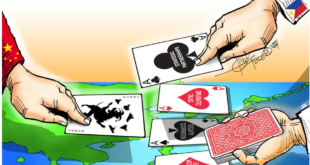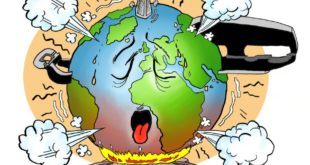China’s drafting of a new map was timed to reassert its territorial claims and flex its muscles ahead of the ASEAN and G20 Summits.

Employing lawfare and so-called grey zone tactics may point to China preparing for the long haul, according to experts.
The tactic involves wearing down its opponents in the South China Sea conflict while waiting for a suitable administration in the United States, which would again give less importance to America’s stabilizing role in the Asia-Pacific region.
China’s preparations for a protracted conflict are evident in its latest moves, from making public the 10-dash line claim, the absence of Chinese President Xi Jinping from the Association of Southeast Asian Nations Summit in Jakarta, and the water spraying by a Chinese Coast Guard vessel of a Philippine Navy boat on a mission to resupply the grounded Sierra Madre.
Regional analysts said China is employing a combination of lawfare, which is the use of legal systems and institutions to undermine an opponent, and gray zone tactics, which are maneuvers short of war that point to a conflict for the long haul.
China’s drafting of a new map was timed to reassert its territorial claims and flex its muscles ahead of the ASEAN and G20 Summits.
It did gain a measure of success as in the joint statements customarily issued at the end of the events; there was no explicit mention of China despite most members of the regional blocs expressing concerns about its assertive actions in the disputed waters.
Collin Koh, a senior fellow at the S Rajaratnam School of International Studies based at Nanyang Technological University in Singapore, said the elephant in the room, amid the increasing aggressiveness of the Asian giant, was China’s undergoing multiple crises.
Koh said that while lawfare and maritime coercion have been part and parcel of Beijing’s toolkit in the past, “there has been an obvious uptick that coincided with China’s domestic problems, which are property market woes, high youth unemployment, and sluggish exports.”
For instance, during the term of former President Rodrigo Duterte, “the Philippines was subjected to boat swarming tactics similar to those recently seen.”
The use of such methods intensified after the Philippines announced an expanded Enhanced Defense Cooperation Agreement with the United States, which Beijing interpreted as one of America’s efforts to intervene in its conflict with Taiwan.
For China, digging in and preparing for a long engagement is beneficial.
At Ayungin Shoal, China has been blocking Philippine missions to repair the dilapidated landing ship grounded there since it knows that the rusting hull would not last too long and nature will take care of its eventual removal.
It can simply wear down the country’s resolve until it abandons its hold on the shoal, or so China believes.
China is trying to prevent a united stand in the region since lawfare can be matched by counter-lawfare, such as by tightening existing legal maritime provisions or creating new ones in line with international law to assert the other claimant nations’ interests, according to geopolitical experts.
ASEAN has inherent structural limitations make it challenging to take a united position on the South China Sea disputes.
China exploits these limitations, such as the ASEAN decision-making process, where a disagreement by one member defeats a unified stand of the 10-nation group.
Thus, the role of powers outside the region remains more important than ever to backstop the efforts to maintain stability while following international law.
Previous talk about matching the military prowess of China, particularly for the long haul, would be impossible for the Philippines.
This was why the alliance with the United States through EDCA was strengthened — to give the Philippines the minimum defense capability against aggressors.
*****
Credit belongs to: tribune.net.ph
 Atin Ito First Filipino Community Newspaper in Ontario
Atin Ito First Filipino Community Newspaper in Ontario






